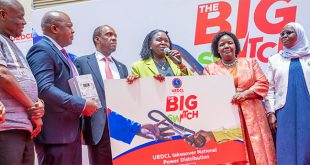
Kampala, Uganda | THE INDEPENDENT | Schools are yet to recover fully from the effects of the COVID-19-induced closures nearly a year after their reopening. Uganda had the longest closure of schools anywhere in the world.
The 22-month closure caused profound disruptions to children’s learning and overall well-being, exacerbating the pre-existing learning crisis by increasing learning losses, and school dropouts as well as increasing the financial burden on private school operators.
Filbert Baguma, Secretary General of the Uganda National Teachers Union (UNATU), says the recovery after the historic disruption of the COVID-19 epidemic is a mixed bag. Although he acknowledges the efforts by the authorities, he maintains that the process is moving at a snail’s pace.
In order to get the sector back on track, the Ministry of Education and Sports initiated the Learning Recovery Programs that focused on three concerns; curriculum consolidation, increasing teaching time and boosting efficiency in learning.
According to Baguma, the three should now be measured at a micro or institutional level before attempting to get a more comprehensive view of the entire sector. For instance, he argues that focus should be placed on how specific schools are recovering from the two-year shutdown and how students and instructors are adjusting upon return.
Dr. Jane Egau, a member of the COVID-19 education response committee says that the sector is on the right track to recovery. Critiquing their own intervention, Dr. Egau says that the recovery rate is slower and blames it on financial challenges.
Recovery time wasted
For each of the three terms of the academic year, the length of time students had to spend in class was raised by the Ministry of education from the customary 12 weeks to 14 weeks.
But it appears that neither public nor private schools made use of this extra time. For instance, after visiting schools at the end of the second term, URN found out that six of the 14 weeks designated for teaching and learning activities had been wasted.
At that time, many schools had opened the term after a week before the official date. Public schools also attested that although they had opened on time, the first week was not utilized as learners had not yet reported. More than three weeks were wasted on beginning of-term, mid-term, and end-of-term examinations, which had been banned.
Worse still, more schools closed two weeks earlier. By the closure of the second term, many head teachers, more so in private schools, noted that they had not yet covered the syllabus but had been forced to close the schools earlier due to the rising commodity prices. Interviewed about this matter, Adrine Kabananukye, the deputy head teacher of Kololo SS, noted that some schools were wasting time. To her, even if the waste was in private schools, it was bad enough.
“Private schools might have the largest number of schoolchildren today. This means the majority of learners are incurring substantial learning losses after the lockdown,” Kabananukye noted. In the third term, more time was wasted as the government decided to end it early and shorten the time by two weeks to prevent the spread of Ebola to schools.
Going by this calculation, Dr. Disan Kuteesa, the head of the education department at Kyambogo University, observes that an average of over two months of potential teaching and learning time was lost in the previous academic year. For Dr. Kuteesa, the crucial inquiry is, “If the recuperation time is lost, when will it be made up?” While releasing the next year’s school calendar, the ministry reverted to the normal 12 weeks-term.
Apparently, there is a debate on whether the prolonged school terms could have stayed for at least two more years. Dr. Egau says that the question of recovering time lost might not necessarily be in the longer term. In her view, if teachers are well equipped with methods of recovering the learning time, the recovery can be done within the available time.
She noted that if teachers carry out their duties as required, the recuperation process will go more smoothly.
Grace Baguma, the Director National Curriculum Development Centre-NCDC, notes that although the ministry has reverted to the normal calendar, schools are expected to continue teaching using the abridged curriculum.
The curriculum was introduced to fast-track teaching and learning and make up for the time lost during the prolonged school closure triggered by the COVID-19 pandemic. Baguma stresses that by design, this curriculum should remain in school for three years and if used well, it will put learners back on track.
No Data
During the lockdown, the National Planning Authority estimated that up to 30 percent of all school-aged children– roughly five million learners– will not return to the classroom. However, no comprehensive study in this area has been done to understand what the real impact could be.
An official in the ministry of education noted that it’s difficult for the ministry to collect such data. “Currently we don’t have a mechanism to tell the actual number of learners who could have dropped out. You might say that they dropped in school but what if they joined another school?”
The Minister of Education, Janet Museveni, recently attested that the government does not have this capability. However, Janet pointed out that this issue will be resolved with the implementation of the Education Management Information System.
The new system will among other things be able to identify a learner when they first enroll in school, track their progress on a term-by-term basis, and determine whether they have dropped out or switched schools. The minister added that her department lacked the resources to implement this crucial system and pleaded with her finance counterpart to prioritize this issue.
Impact on the private sector
By the end of 2021, data showed that 73,240 education institutions owed banks at least 1.2 trillion Shillings, which put a black cloud over the future of millions of learners as schools were on the brink of collapse.
Hasadu Kirabira, the chairperson of the National Private Educational Institutions Association (NPEIA), notes that after reopening, they thought that the government was going to help them but nothing has been done leaving schools choking on loans, taxes, and other bills from the two-year lull.
However, it should be noted that many schools raised school fees to plug gaps but are struggling to recover from the COVID-19 shock. The Economic Policy Research Center, a think tank affiliated with Makerere University, recently stated that Uganda’s education sector will fully recover from COVID-19’s impact and after effects after 2030.
Paul Lakuma, a research fellow in the macroeconomics division of EPRC, stated that if bottlenecks are to be promptly alleviated, there is an urgent need for governmental initiatives that stimulate and incentivize the education sector. According to this forecast, every delay will lengthen the recuperation time.
*****
URN
 The Independent Uganda: You get the Truth we Pay the Price
The Independent Uganda: You get the Truth we Pay the Price



